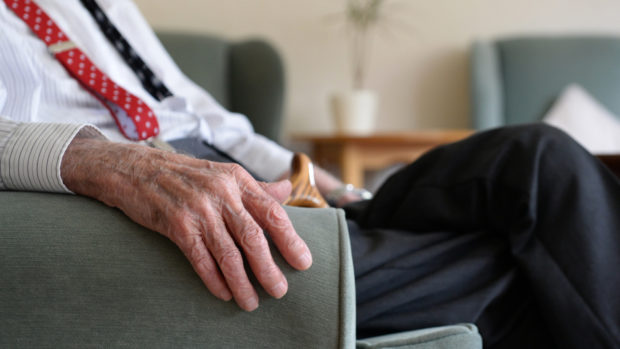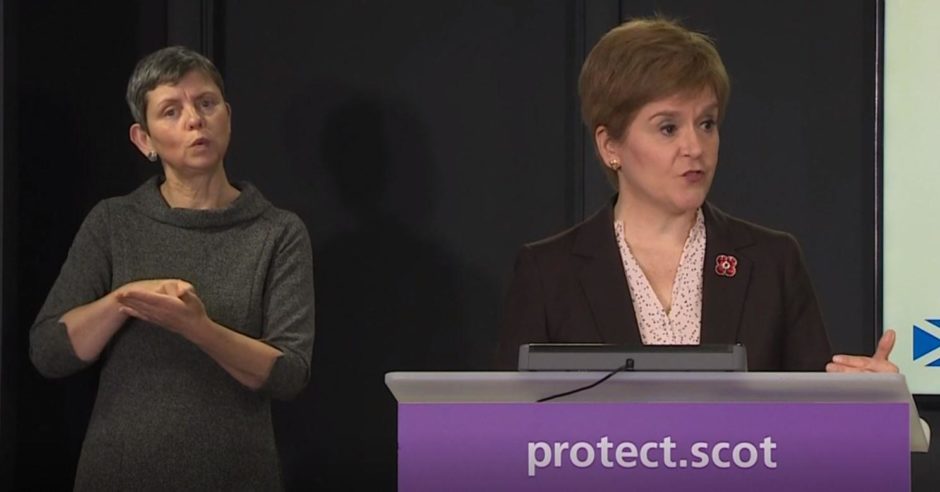Almost 80 patients who tested positive for Covid-19 were transferred from Scottish hospitals to care homes in the weeks immediately before and after lockdown, a new report has revealed.
In August, The Sunday Post published their investigation, which showed dozens of elderly patients who had tested positive for the virus were moved from hospitals into care homes in the weeks surrounding lockdown, as hospitals were urged to prepare for a flood of Covid-19 patients.
This prompted First Minister Nicola Sturgeon to call on Public Health Scotland to look in detail at the situation involving care homes, including the numbers of people moved who “may have had the virus”.
The long-awaited report, released on Wednesday, revealed 78 patients who tested positive for Covid-19 in hospital were discharged to care homes between March 1 and April 21.
Only 650 of the 3,599 elderly patients discharged from hospital during this period had been tested.
The report also reveals that, between April 21 and May 31, a further 278 hospital patients who had previously tested positive for the virus were discharged to care homes, with 233 receiving a negative test prior to discharge, suggesting 45 did not.
Speaking during her daily Covid-19 briefing, the first minister said the Public Health Scotland report on care homes concludes that, allowing for other factors, such as the size of a care home, “hospital discharges were not found to have contributed to a significantly higher risk of an outbreak”.
Quoting directly from the report, she said: “The analysis does not find statistical evidence that hospital discharges of any kind were associated with care home outbreaks.”
But she added: “Nothing in it detracts from the tragedy of the deaths that have occurred in care homes over the course of the pandemic, and nothing ever will detract from the heartbreak of those bereaved.”
Hospital discharges ‘not statistically significant’
Public Health Scotland found that the percentage of care homes with an outbreak “increased progressively” with care home size, from 3.7% of care homes with less than 20 registered places to 90.2% of care homes with more than 90 registered places.
The data also revealed that 13.5% of care homes with no discharges from hospital had an outbreak, compared to 38% of care homes with one or more discharges.
In its report, PHS said that after accounting for care home size and “other care home characteristics”, hospital discharges are “not statistically significant”.
When asked who was responsible for the decisions around care homes, the first minister said she has “never shirked my responsibility”.
She added that the Scottish Government was responsible for the guidance on testing, which up until April 21, did not include a policy to test everybody.
However, Ms Sturgeon said she is not responsible for “individual clinical decisions” and “didn’t know there were particular people who had tested positive taken into care homes”.
The report details some of the clinical reasons why in some circumstances individuals were not tested, relating to their ability to consent to testing and the appropriateness of testing, such as is the case in end-of-life care situations.
Data contained within the report show that, between March 1 and May 31, 531 hospital patients were discharged to care homes by NHS Grampian, 272 by NHS Highland, 22 by NHS Orkney, 30 by NHS Shetland and 40 by NHS Western Isles.
There were 337 patients moved from hospitals to care homes in the NHS Tayside region and 355 across NHS Fife.
However, there are no figures relating to how many patients had been tested for coronavirus, or whether they had tested positive, broken down by health board.
Sunday Post investigation
In a letter addressed to Scottish Conservative health spokesman Donald Cameron revealed in The Sunday Post last week, the first minister said she had no idea hospital patients who had tested positive for coronavirus were moved to care homes until she read about when the newspaper’s investigation was published in August.
Ms Sturgeon’s letter said that, before the publication of the story, “neither Scottish Government ministers nor government officials had information on the results of Covid-19 tests prior to discharge, or where these patients were discharged”.
On April 21 Health Secretary Jeane Freeman announced a policy change that introduced a requirement for negative tests before patients could be moved to care homes.
However, the Sunday Post revealed that five health boards moved patients who had tested positive after this date – including NHS Grampian and NHS Tayside.
More than 2,000 deaths among elderly care home residents have been linked to the virus.
Ms Freeman will next week address in the Scottish Parliament one of the report’s findings, that the most significant factor in outbreaks was the size of the care home, the first minister confirmed.
She added: “That is not blaming care homes and it is not blaming staff,” the first minister said during the briefing.
“It is simply recognising that in bigger care homes, there’s perhaps more interactions, there’s perhaps more of a risk of community transmission getting into the care homes.”


